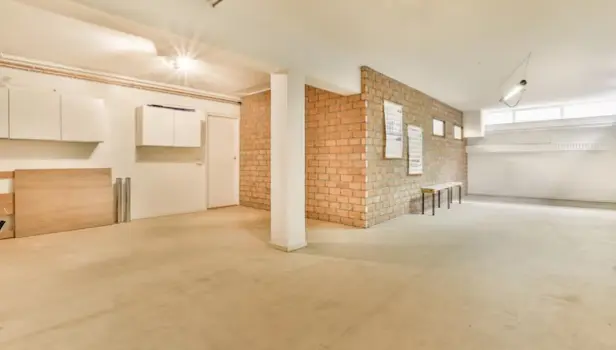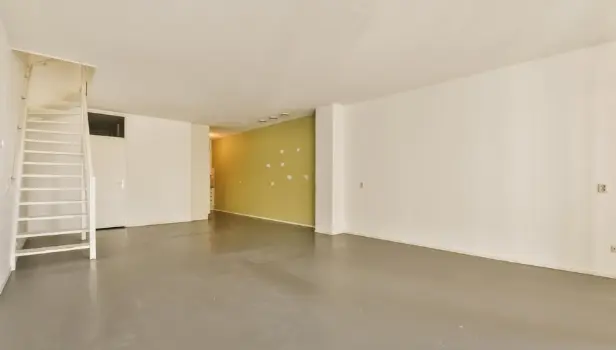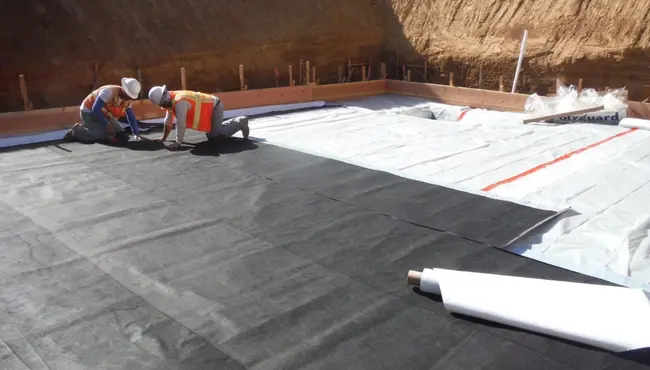
Protecting bridge decks from water infiltration is critical for maintaining infrastructure durability and safety. These surfaces endure heavy traffic, exposure to moisture, and harsh environmental conditions.
Polyguard’s specialized waterproofing systems—including liquid-applied and sheet membranes—are designed to protect bridge decks from long-term wear, corrosive agents, and damage, to help ensure the structural integrity of bridges for decades to come.
Why Bridge Deck Waterproofing Matters
Bridge decks are constantly exposed to harsh conditions that can compromise their structural integrity, which makes effective waterproofing a key component in maintaining long-term durability.
Traffic and Environmental Stress on Bridge Decks
Bridge decks serve as the main load-bearing surfaces for traffic and they are exposed to significant stress from vehicles, weather, and de-icing salts.
Corrosion of Steel Reinforcement
Over time, this exposure can corrode the steel reinforcement embedded in concrete, which can compromise the structure's integrity and shorten its lifespan.
The Consequences of Inadequate Waterproofing
Without an adequate waterproofing system, water seeps into the deck, and can lead to spalling, cracking, and other forms of deterioration.
Benefits of a Reliable Waterproofing System
Implementing a reliable waterproofing system, like those offered by Polyguard, is a proven way to prevent these issues and extend the deck’s service life by reducing the need for frequent and costly repairs.
To ensure long-lasting protection, there are several types of waterproofing membranes available, each designed to meet specific project needs and environmental conditions.
Types of Bridge Deck Waterproofing Membranes
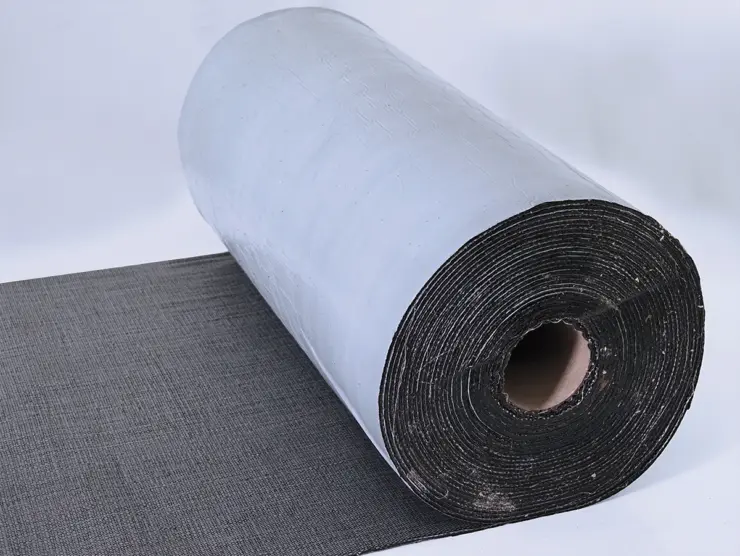
Cold-Applied Sheet Membranes for Bridge Decks
Polyguard’s Cold Flex SA membrane is a cold-applied sheet membrane that is widely recognized for its durability and ease of application.
This 135-mil membrane forms a waterproof barrier by adhering directly to the deck, to protect against moisture infiltration and damage from traffic.
Additionally, the puncture resistance of the membrane, when paired with Polyguard’s Polyflow drain board, exceeds ASTM standards by two times to provide superior protection against backfill damage.
Its tensile strength of 50 lbs./in. and 20% elongation allows it to withstand the mechanical stresses typical of bridge decks.
Key Benefits:
- Puncture resistance: Able to withstand the wear and tear of heavy traffic, these membranes maintain their integrity even under stress.
Ease of application: The cold-applied nature of Polyguard’s membranes eliminates the need for hot materials which improves safety and efficiency during installation.
Liquid-Applied Membranes
Polyguard LM-95 liquid-applied membrane offers a seamless, continuous waterproofing solution.
This type of membrane is especially effective for bridge decks with irregular shapes or complex geometries.
The liquid membrane is sprayed onto the surface to form a tough, flexible barrier that prevents water, salts, and other corrosive materials from damaging the structure.
This membrane’s rapid curing time allows the bridge deck to be quickly returned to service. When combined with Polyguard 650 RC Liquid Adhesive, the system meets ASTM D-41 standards, to ensure a strong bond to the surface.
Advantages:
- Seamless application: Liquid-applied systems leave no joints, which reduces potential failure points and ensures complete coverage, even in hard-to-reach areas.
- Fast curing: These membranes cure quickly to allow bridge projects to stay on schedule, even in demanding environments.
How to Apply Bridge Deck Waterproofing Membranes

The success of any waterproofing system relies heavily on proper installation. Skipping key preparation steps or improper application can lead to membrane failure and premature repairs. Polyguard’s systems are designed for easy installation, but certain best practices should always be followed to maximize their effectiveness.
Surface Preparation
Thorough surface preparation is crucial to ensuring proper adhesion of the waterproofing membrane. Before applying either sheet or liquid membranes, the deck surface must be cleaned of dust, debris, and moisture. In many cases, priming the surface with Polyguard 650 RC Liquid Adhesive ensures an optimal bond between the membrane and the deck.
Steps for Effective Surface Preparation:
1. Clear contaminants: Ensure that the surface is free of any dust, dirt, or debris.
2. Moisture tests: Use moisture meters to verify that the surface is dry enough to support membrane application.
3. Priming the surface: For liquid-applied systems, apply Polyguard 650 RC as a primer to enhance the bond between the membrane and the substrate.
Quality Control During Installation
Maintaining quality control during installation is essential to the longevity of the waterproofing membrane. For liquid-applied membranes, uniform thickness must be achieved to ensure full protection. Post-application checks, such as moisture testing and infrared thermography, can detect issues like voids or delamination before the waterproofing is completed.
Inspection Techniques
1. Moisture meters: Confirm that the deck surface is adequately dry prior to applying the membrane.
2. Infrared thermography: After installation, use this technology to detect any voids or areas where the membrane may not have adhered properly.
Long-Term Benefits of Bridge Deck Waterproofing

The benefits of investing in high-quality waterproofing systems for bridge decks extend beyond the immediate protection of the structure. These systems reduce long-term maintenance costs, prevent structural damage, and improve the overall safety and performance of the bridge.
Protecting Against Structural Damage
A well-applied waterproofing membrane protects bridge decks from water infiltration, de-icing salts, and pollutants, to prevent the corrosion of steel reinforcements and the spalling of concrete.
With a permeability rating of 0.05, Polyguard’s 665 Waterproofing Membrane minimizes water vapor transmission, to help ensure long-term protection against moisture.
This protection ensures that the bridge remains structurally sound for years, even under continuous traffic and environmental stress.
Reducing Maintenance and Repair Costs
By preventing water from penetrating the bridge deck, waterproofing membranes reduce the frequency and severity of maintenance requirements.
With a puncture resistance of 200 lbs., Polyguard 665 Waterproofing Membrane offers strong resistance to environmental damage and traffic loads by significantly extending the life of the bridge.
This leads to significant savings in repair costs over the lifespan of the bridge, and frees up municipal and contractor budgets for other critical infrastructure needs.
Customizing Waterproofing Systems to Project Needs
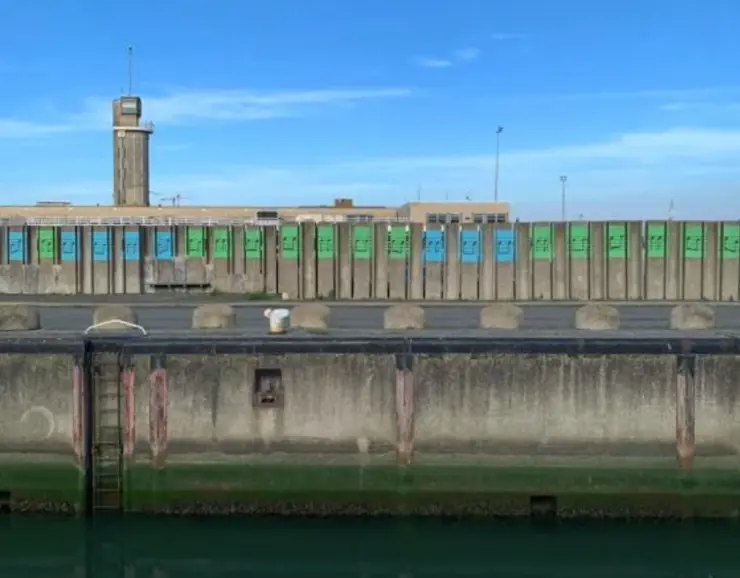
The appropriate waterproofing solution varies depending on factors such as climate, traffic load, and environmental exposure. Polyguard’s suite of products, including both sheet and liquid-applied membranes, can be tailored to meet the specific demands of each project, for optimal performance under a variety of conditions.
Environmental Considerations
Bridges in coastal or urban environments often require additional protection due to exposure to saltwater, pollutants, or chemicals. In such cases, a more robust waterproofing system or multiple layers of protection may be necessary.
Traffic Load and Performance
For bridges that support heavy traffic, more durable membranes with higher puncture resistance and load-bearing capacity, like Polyguard Cold Flex Membrane, may be needed to ensure long-term protection.
Protect Your Infrastructure with Polyguard
Polyguard’s range of waterproofing systems is engineered to provide long-lasting protection for bridge decks under the most challenging conditions. Whether you need the seamless coverage of a liquid-applied membrane or the puncture resistance of a sheet-applied system, we have the solution for your project!
Contact us today for more information.


